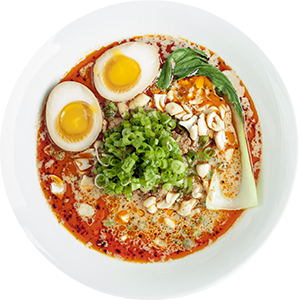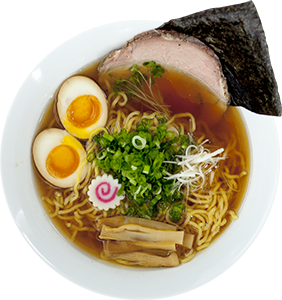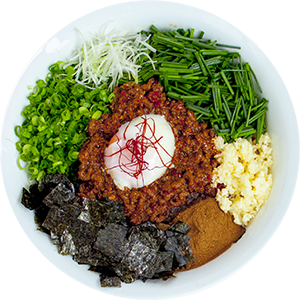We are a team of Le Cordon Bleu alumni, chefs, entrepreneurs and technologists brought together by our love for ramen.
Passionate about increasing awareness of Chinese origins of ramen we strive to uphold the quality of authentic modern-day East Asian food in London.
Dishes we serve do not shy away from pronounced and exciting, sometimes unfamiliar flavours. We use locally sourced meats and over 30 different ingredients imported from Japan and China to create our own stocks, seasonings, special umami-enhancing spice mixes and oil infusions. Ingredients you can always find on our kitchen shelves include katsuobushi (dried fermented smoked skipjack tuna flakes), kombu seaweed, shiitake mushrooms, dried fish and shellfish, red chilli peppers and, of course, Sichuan peppercorns.
Journey to Japan and China
After about 6 months of developing our recipes we realised we were, frankly, out of our depth. It was clear we had a lot to learn to be able to recreate those authentic, delicately balanced flavours we so fondly remember from our trips to Japan. We needed help.
In summer 2019 we reached out to an award-winning Japanese Ramen Master from Tokyo, a few days later we packed our bags and were on a plane to Japan. Slurrrrrping as many bowls of ramen we could every day to learn as much as possible we filled our stomachs with everything from hearty Sapporo’s miso ramen to porky tonkotsu bowls from Fukuoka and everything in between.
Full of impressions we finally met with Sensei, a true veteran with 25 years in the industry. He took us on a journey through ramen history, unravelled the science behind umami, classic and modern ramen preparation methods and gracefully shared many of his secrets with us. While discussing the origins of ramen we were surprised to realise how seldom celebrated its Chinese heritage is these days.
Without doubt, it is the attention to detail, refinements and modern techniques used by the Japanese that have made ramen we all know today. Yet, it is the resourcefulness of Chinese immigrants who brought first alkaline noodles to Japan that enabled the ramen revolution.
We believe Tantan Men - a Japanese ramen version of a classic Sichuan dish Dandan Mien (担担面) - captures this transition perfectly.
We have made it the star of our menu and teamed up with Sensei to develop our own recipe using authentic ingredients and traditional preparation methods. We carefully studied ratios of different umami acids and used refractometers to experiment with intensities of our soups, oils and seasonings to find that perfect balance of flavours, aromas and mouthfeel.
In search for authenticity we again packed our bags and in 2019 travelled to Chengdu, the capital of China's Sichuan province. We visited local Sichuan peppercorn producers, spice markets and wholesalers in an attempt to learn more about Sichuan cuisine and source authentic, freshest ingredients we can get our hands on.
We are excited to bring this unique dish to London, shed some light on ramen's Chinese origins, and hopefully make our small contribution to the wonderful world of East Asian cuisine in the West.



